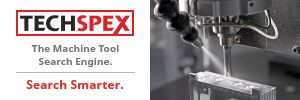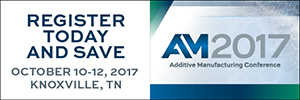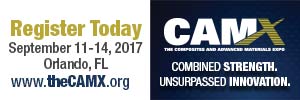In this light, the cast-iron rear differential might seem like a strange compromise. After all, the competition uses aluminum housings. However, the heavier metal helps preserve the car’s 50:50 weight distribution and has other benefits. Cast iron has a lower thermal expansion rate than aluminum, and this means that the differential bearings have a lower preload. It also suppresses noise better. Finally, the driveshafts are attached by bolts not splines, eliminating spline take-up and the NVH problems it brings.
Outback is Cadillac’s first five-link independent rear suspension. On each side, the upper and lower control arms make up four of the links, with the fifth being a toe-control link to increase control over the wheel on a horizontal plane, especially during cornering. Straight steel arms are used in place of aluminum, each with lightning holes stamped in, and aero covers on the lower links reduce underbody drag. To cut weight, the rear suspension was optimized around M12 bolts, not M14s. The rear suspension is mounted to an isolated steel subframe with hydroformed side rails optimized for both structure and mass. Twin-tube dampers are used with the standard FE2 suspension, and computer-controlled magneto rheological dampers with the FE3.
Even the brakes came in for greater scrutiny. Brembo fixed calipers are used at all four corners on the Luxury and Premium Collection-equipped cars (base vehicles use sliding-calipers), and all variants are fitted with FNC (Ferritic Nitro Carburized) discs. This proprietary process infuses the discs with carbon and nitrogen after the rotor is surface machined. The 10-micron coating, GM says, should double the rotors’ service life and prevent them from rusting.
To get here, says Kelzer, required two years “developing kinematics models and building six mules to test our theories†and another 3.5 years to go from formal program approval to production. It was time well spent, despite rumors that the project was shelved during GM’s bankruptcy. “It was central to our plans for Cadillac,†says Kelzer, “so the ATS was delayed, but never under threat of cancellation. Without it, everyone knew we wouldn’t be competitive.â€
They also knew the ATS had to be weight-competitive, which meant a reliance on high-strength and ultra-high-strength steels. “The martensitic steels made smaller sections possible, especially in the A- and B-pillars,†says Larry Craig, ATS program Engineering Manager, “and that allowed us to maximize the DLO size.†The strut towers are cast aluminum, and the hood is made of sheet alloy. Even more surprising are the deep-draw lightweight magnesium engine mounts. However, the seriousness of the weight-reduction program—“We chased grams every day,†says Craig—is highlighted by the serrated edges on the B-pillar flanges.
Much of the ATS’s body-in-white uses a combination of spot welding and adhesives. Once the size of each fastening point was deduced, the engineers went in and pared back the flange area. “We did several iterations until we got the best compromise between manufacturability, weight, and strength,†says Craig. The result looks like a maniacal giant took rounded-edge pinking shears to each flange, paring away the excess as he went along. As a result, the base ATS weighs 3,315 lb. A 2.0-liter BMW 328i tips the scales at 3,461 lb.
Open the hood, and you will find one of three engines and a pair of drive options. The first is a 2.5-liter inline four with rear-wheel drive and a six-speed automatic. This direct-injection motor has variable valve timing, produces 202 hp @ 6,300 rpm and 191 lb-ft @ 4,400 rpm, and returns EPA mileage of 22 mpg city/32 mph highway. Unlike the other two direct-injection engines offered, the 2.0-liter uses premium fuel to produce 272 hp @ 6,300 rpm and 260 lb-ft @ 1,700-5,500 rpm. It also returns an estimated EPA rating of 22/32, but offers the options of a six-speed manual and all-wheel drive. The last engine in the lineup is the same 3.6-liter V6 found under the hood of most CTS models, rated at 321 hp @ 6,800 rpm and 373 lb-ft @ 4,800 rpm. Not surprisingly, the mileage ratings take a hit with all this power: 19 mpg city/28 mpg highway. All-wheel drive is available as an option, but not the manual transmission.
Underbody aerodynamics received similar attention. The front fascia has a raised center section that establishes a throat for underbody airflow to follow. Light transverse ridges on its underside help control boundary layer formation and the air is funneled toward the vehicle’s center. This draws air through the engine compartment, cools the exhaust, and draws heat away from the transmission and differential. Flaps in front of the rear wheels and covers over the lower rear suspension arms reduce turbulence and steer the air back toward the center of the car. The airfoil-shaped transverse muffler acts as a diffuser to scavenge air from beneath the car, and produce slight negative pressure. The sharp-edged rear spoiler/CHMSL unit on the trunk lid not only encourages clean flow separation, it helps keep the underbody flow attached for maximum efficiency. This allows the ATS to do without a front fascia-mounted splitter to control underbody airflow.
Recently, the Audi A4, BMW 3 Series, and Mercedes C-Class have all been upgraded, making the ATS’s task that much harder. However, based on the effort expended to make this competitive, it will be interesting to see how the ATS fares, and what Cadillac does for an encore.








